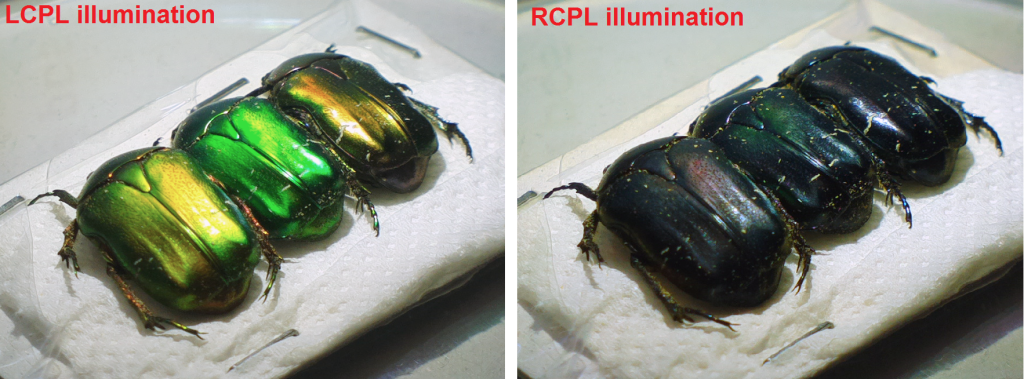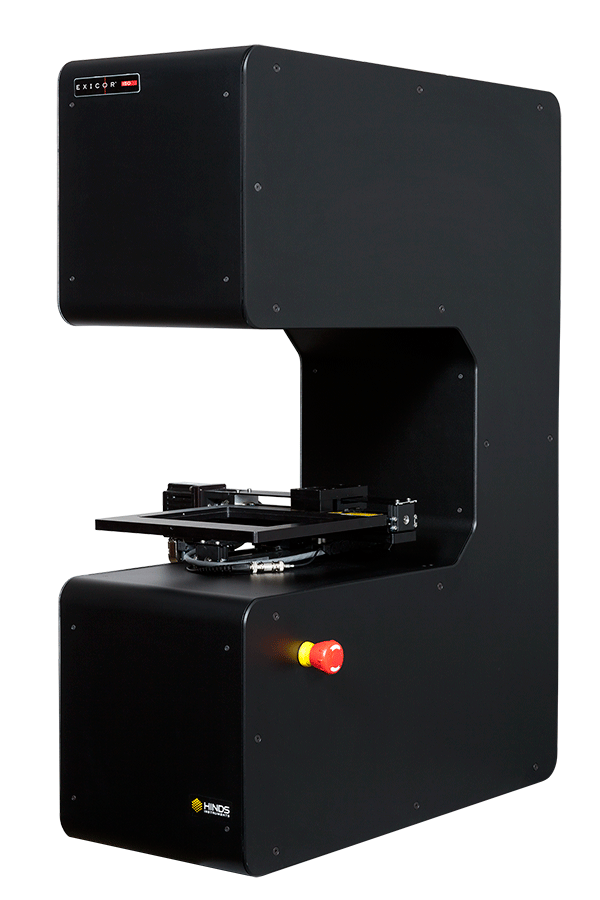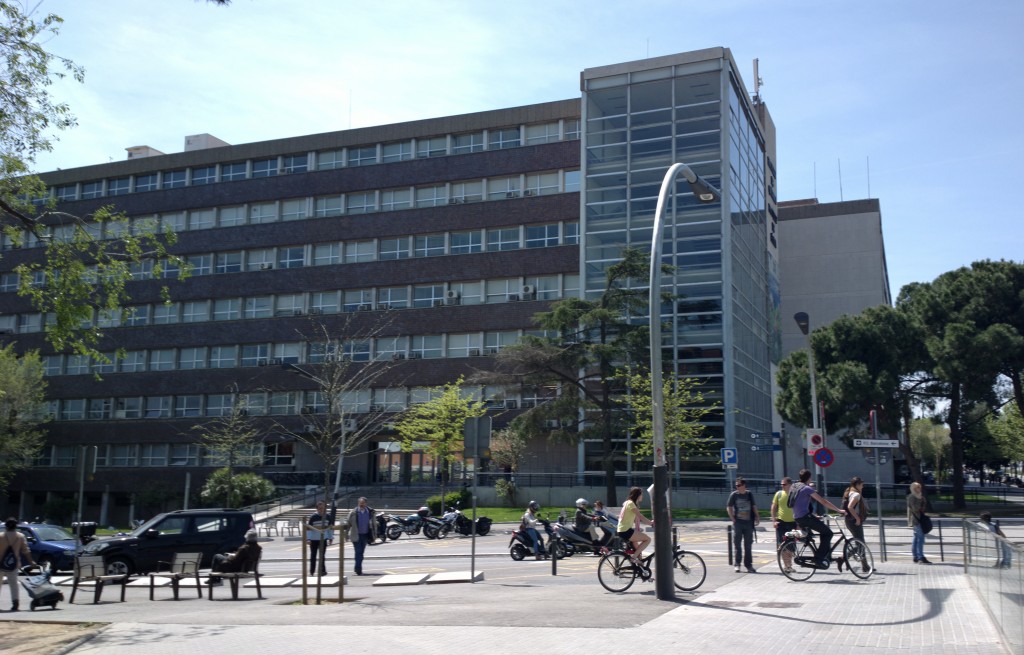I took these two pictures last week in the lab. Too amazing for not sharing.
 (click on the image to enlarge)
(click on the image to enlarge)
These are three Cetonia Aurata beetles showing different cuticle colors. Can you anticipate how their Mueller matrix looks like?
Welcome to the website of Oriol Arteaga. Here you will mostly hear about my research activities which mainly focus in polarimetry, ellipsometry or, more in general, in light-matter interactions. You can contact me at oarteaga(AT)ub.edu and at www.ub.edu/plat
During 2014-2015 I will be working on a European Marie Curie IIF project, titled Polarimetric characterization of natural and artificial chiral anisotropic media (Nanochirality) at University of Barcelona.
Not many updates lately! I hope this semester I will manage to keep the website more up-to-date. I also want to add a section with some new scientific content in the form of a tutorial, let’s see if I find the time. For the moment today I have updated the publication list in the lazy way, with a link to Google Schoolar. You can check my latest publications there. Any kind of feedback will be very appreciated!
By the way, we are happy because the Mueller Matrix XT150 polarimeter I mentioned in the previous post and sold by Hinds Instruments has won one of the 2013 R&D 100 Awards.
The working principle of this instrument is explained in this publication.
Hinds Intruments is selling the new 150XT Mueller Polarimeter. This instrument was developed in collaboration with New York University using the 4 Photoelastic Modulator (PEM) technology we pioneered. To my knowledge this is the first commercial full Mueller matrix polarimeter with research-grade specifications ever made available . The key element here is the sensitivity. The instrument was developed to solve complex optical activity measurements involving chiral molecules molecules and crystals that show the tiniest bias to circular polarization. The result is a highly versatile instrument, capable of studying the transmitted complicate optical response of virtually any sample, even highly depolarizing one. The tiniest strain in a glass, the optical rotation of a birefringent crystal, the circular dichroism of a oriented molecular aggregate, the heterogeneous response of a petrological sample, and many other can be studied with this polarimeter.

You can have more information about this instrument checking their brochure:
http://www.hindsinstruments.com/wp-content/uploads/150XT-Mueller-Polarimeter.pdf
After more than two years in New York University this month I have started to work again in Universitat de Barcelona. This was possible because some time ago I got a Beatriu de Pinos Fellowship. These are grants to encourage the recruitment of research personnel in the Catalan public sector, be they in universities, research centers or hospital foundations, who have had postdoctoral stays abroad.
Lately I have been quite busy with the move but now I am already resettled. I pretend to keep working in the same reseach areas as before so expect here more stuff about Mueller Matrix polarimetry and others.
Recently I have been working on how Mueller matrices handle reciprocal and nonreciprocal optical effects. Mueller matrices are truly informativative about reciprocity, but one needs to know how the information is “stored”. A series of two papers are going to be published in Optics Letters about the topic. For the moment they can be accessed in early view.
Mueller matrix description of homogeneous depolarizing media. I. Number of independent parameters
Mueller matrix description of homogeneous depolarizing media. II. Differential decomposition
First message of 2013! Happy New Year to any eventual visitor. Some quick updates to start the year:
Last year I spent a lot of my time to build the instrument reported in this paper. It is one of the bests polarimeters/ellipsometers to date, because it measures simultaneously the 16 elements of a Mueller matrix without any moving part.
You can get it here.
More exciting instrumental things should be coming soon!
A new paper has been published.
You can view this paper here.
I have published a biographic note about Paul Soleillet. Check the tabs at the top of this page. The paper we have recently published about Mueller matrices in fluorescence scattering (see the previous post) contains a short reappraisal of Soleillet’s work. As there seems to virtually nothing available in internet about his biography, I find it necessary to share here what I have learnt about him.